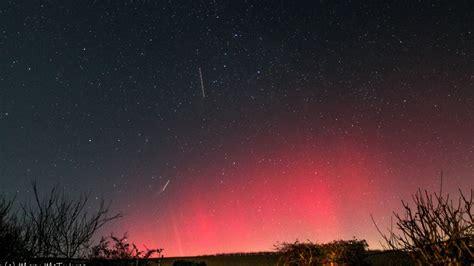Have you ever looked up at the night sky and witnessed the breathtaking beauty of the aurora borealis, also known as the northern lights? It’s a phenomenon that has captivated humans for centuries with its dynamic display of colorful lights dancing across the darkness. However, amidst this celestial spectacle, scientists have recently stumbled upon an intriguing anomaly – a mysterious white patch that appears near the vibrant hues of the aurora.
Dr. Emma Spanswick, a distinguished researcher in Physics and Astronomy at UCalgary, sheds light on this enigmatic occurrence. In a groundbreaking study published in Nature Communications, Dr. Spanswick delves into what she describes as a “structured continuum emission” linked to the aurora borealis. She vividly recounts her initial reaction to this puzzling sight, stating, “You’d see this dynamic green aurora… some of the red aurora in the background and, all of a sudden, you’d see this structured — almost like a patch — grey-toned or white toned-emission connected to the aurora.”
“So, the first response of any scientist is, ‘Well, what is that?'”
This inexplicable white patch had been mentioned in scientific literature before but remained unexplained until now. Dr. Spanswick’s research team made a significant breakthrough by determining that it represents a notable heat source associated with the auroras. This discovery challenges prior assumptions about the simplicity of these natural light shows and hints at their underlying complexity.
One key factor enabling this discovery was advancements in camera technology. Dr. Spanswick highlights how modern digital cameras have revolutionized our ability to capture detailed images of celestial events like never before. The accessibility of high-quality sensors has not only empowered amateur photographers but also facilitated scientific investigations into phenomena such as the auroras.
“Everyone has noticed… Your cellphone can now take pictures of the aurora.”
Interestingly, this investigation was prompted by growing interest in continuum emissions following observations of another rare atmospheric phenomenon called STEVE (Strong Thermal Emission Velocity Enhancement). Drawing parallels between STEVE’s distinctive purple glow and the newfound white patch near northern lights underlines how interconnected and diverse Earth’s atmospheric wonders truly are.
The significance of this research extends beyond scientific curiosity; it also involves nurturing young talent within academia. Three UCalgary students played pivotal roles in unraveling the mysteries surrounding these luminous anomalies. Josh Houghton, an undergraduate student turned research intern on this project shares his excitement: “I very quickly got involved… It’s just very cool.” His contributions were integral to analyzing data and eventually co-authoring the Nature paper alongside seasoned researchers.
“He’s had one heck of an internship experience,”
As we ponder these cosmic enigmas illuminated by dedicated scholars like Dr. Spanswick and budding talents like Josh Houghton, we gain deeper insights into Earth’s intricate web of natural phenomena waiting to be discovered and understood.

